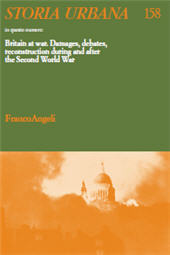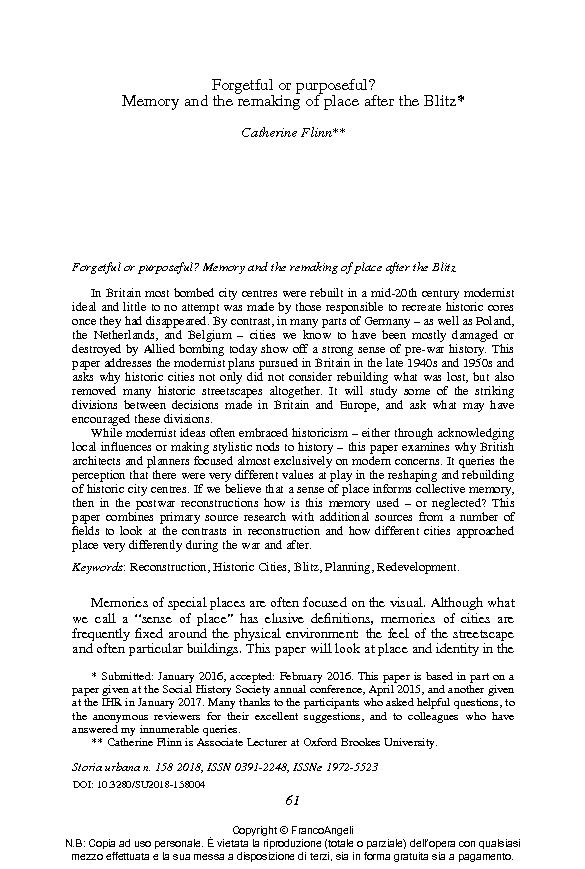Forgetful or purposeful? Memory and the remaking of place after the Blitz
61-85 p.
In Britain most bombed city centres were rebuilt in a mid-20th century modernist ideal and little to no attempt was made by those responsible to recreate historic cores once they had disappeared. By contrast, in many parts of Germany - as well as Poland, the Netherlands, and Belgium - cities we know to have been mostly damaged or destroyed by Allied bombing today show off a strong sense of pre-war history. This paper addresses the modernist plans pursued in Britain in the late 1940s and 1950s and asks why historic cities not only did not consider rebuilding what was lost, but also removed many historic streetscapes altogether. It will study some of the striking divisions between decisions made in Britain and Europe, and ask what may have encouraged these divisions. While modernist ideas often embraced historicism - either through acknowledging local influences or making stylistic nods to history - this paper examines why British architects and planners focused almost exclusively on modern concerns. It queries
the perception that there were very different values at play in the reshaping and rebuilding of historic city centres. If we believe that a sense of place informs collective memory, then in the postwar reconstructions how is this memory used - or neglected? This paper combines primary source research with additional sources from a number of fields to look at the contrasts in reconstruction and how different cities approached place very differently during the war and after. [Publishers' text].
-
Articles from the same issue (available individually)
-
Information
ISSN: 1972-5523
DISCIPLINES
KEYWORDS
- Reconstruction, Historic Cities, Blitz, Planning, Redevelopment;



